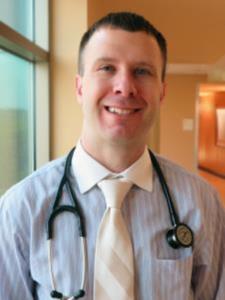Strokes Do Not Hurt But They Damage the Brain

Christopher Stack, M.D.
By: Dr. Christopher Stack
In the medical world, when someone is having a stroke we call it a “brain attack.” We do this to make sure everyone involved knows that it is an emergency. When your brain is being “attacked” by a stroke it means the brain is being damaged and, if nothing is done quickly, parts of the brain will die. Strokes come in two varieties, bleeding (called hemorrhagic stroke) and clotting (called ischemic stroke). With hemorrhagic strokes, blood leaks out into the surrounding brain causing damage. With ischemic stroke, a clot forms within the blood vessels and chokes off the blood supply to parts of the brain.
Essentially, a stroke causes brain cells (called neurons) to be injured and then eventually die if nothing is done to reverse what is happening. These neurons go through stages of injury when a stroke starts. First, the neurons are stunned by the damage that is occurring, but they can still be saved. When they stay stunned for too long then will eventually die. Neurons do not grow back, which is why it is important to get treatment for stroke very quickly. If treated quickly, the neurons will only be stunned and not die.
In the past 5 years, remarkable strides have been made in stroke treatment. We are able safely and effective treat more patients each year. Treatment includes medications and procedures aimed to restore blood flow and save neurons. In order to get treatment quickly, people must be educated about the signs of a stroke.
Strokes do not hurt; they cause you to lose the ability to do things. Stroke can cause someone to lose the ability to walk, speak, see, move, and/or feel. Strokes come on suddenly. We want people to “BE FAST” and call 911 if they notice one or more of these signs. BE FAST stands for balance, eyes, face, arm, speech and time. Let’s break down what each part means.
Balance: During a stroke, people can lose the ability to walk. They may also drag a leg while walking. These things occur because a leg can become weak during a stroke.
Eyes: Sudden changes in vision can be a sign of a stroke. If someone loses the ability to see, that can be a sign for a stroke. In addition to loss of vision, double vision is another sign of stroke.
Face: When someone has a stroke, their face often appears twisted. Ask them to smile. If one side of the face appears droopy, that can be a sign of stroke.
Arm: One arm can become weak during a stroke. Ask them to hold both arms in front of them. If one arm drifts down, that can be a sign of a stroke.
Speech: Abnormal speech is a sign of a stroke. Speech can become garbled or slurred. Sometimes, people know what they want to say but cannot get the words out. Other times, people get the words out but what comes out does not make sense.
Time: Time is the most important thing with stroke. Time is brain. Call 911 immediately if you notice one or more of these signs.
Remember to BE FAST, you can save a life. Each year, we are able to treat more and more people. Stroke does not hurt but it causes you to lose the ability to do things. Quick treatment helps people regain their ability to function again. These treatments are designed to save those stunned neurons and save them from dying. Again, if you notice one or more of the BE FAST signs, call 911 immediately.
Dr. Christopher Stack is a vascular neurologist with the University of Maryland Baltimore Washington Medical Center. He can be reached at 410-553-8160.
